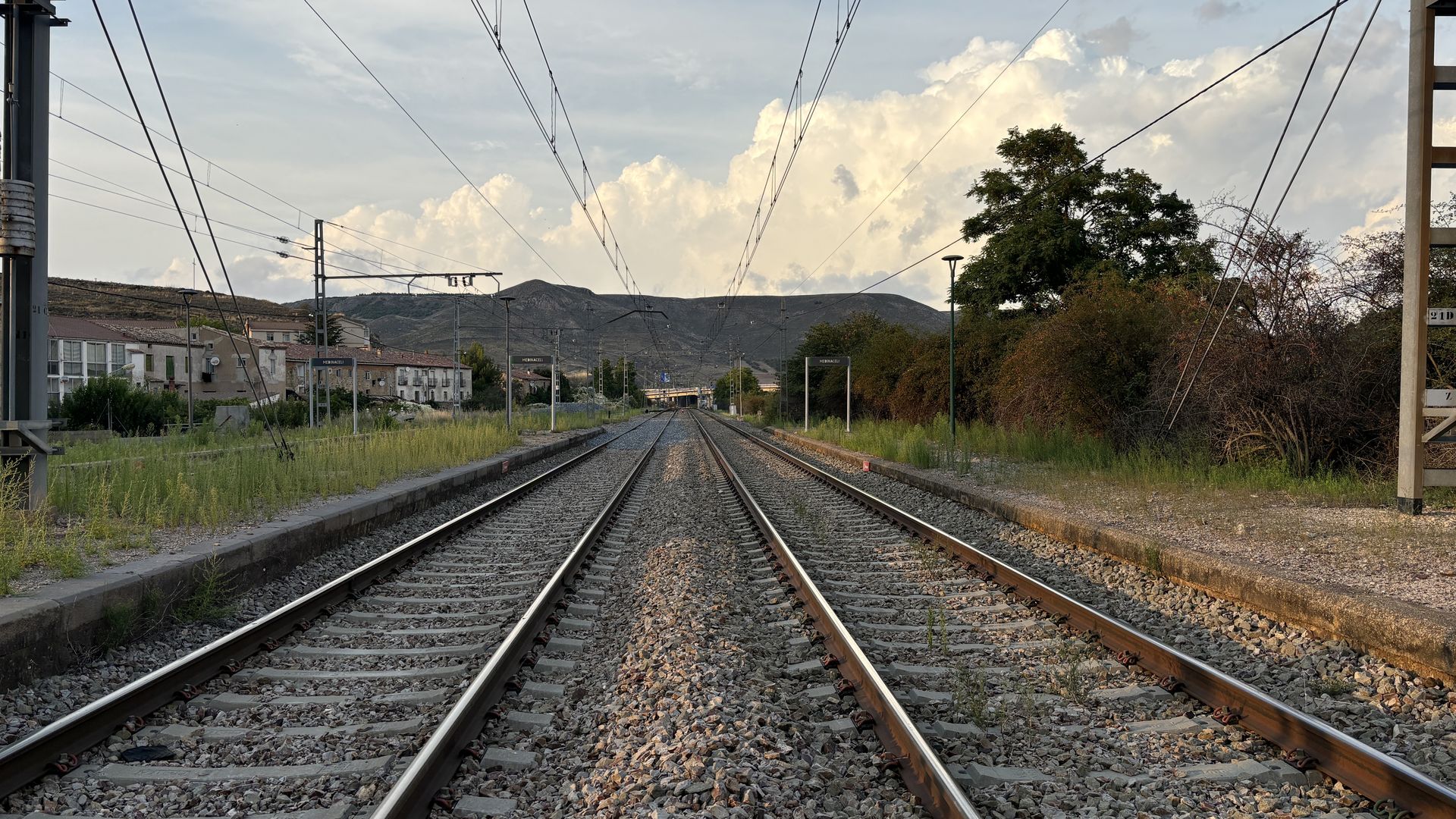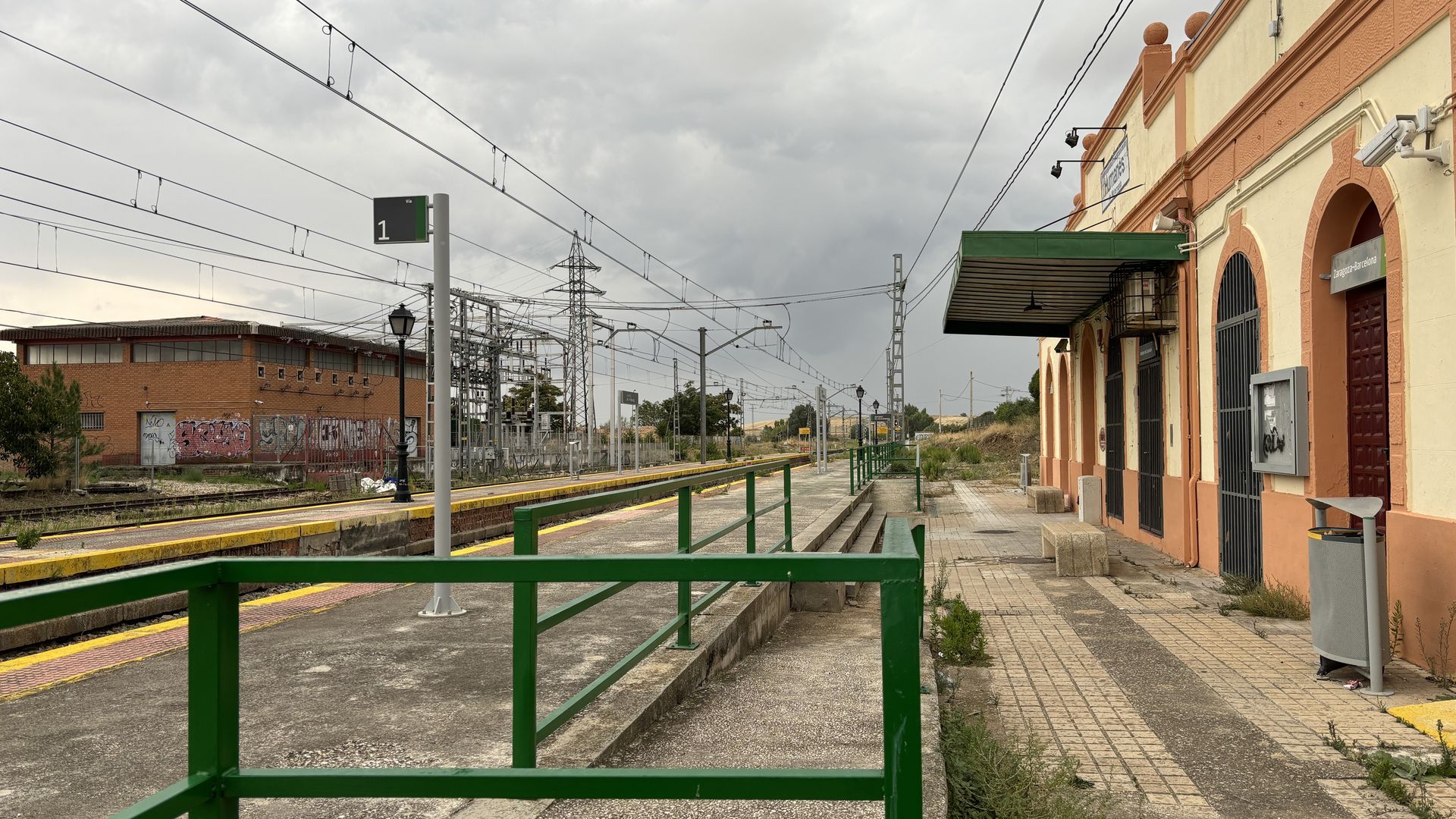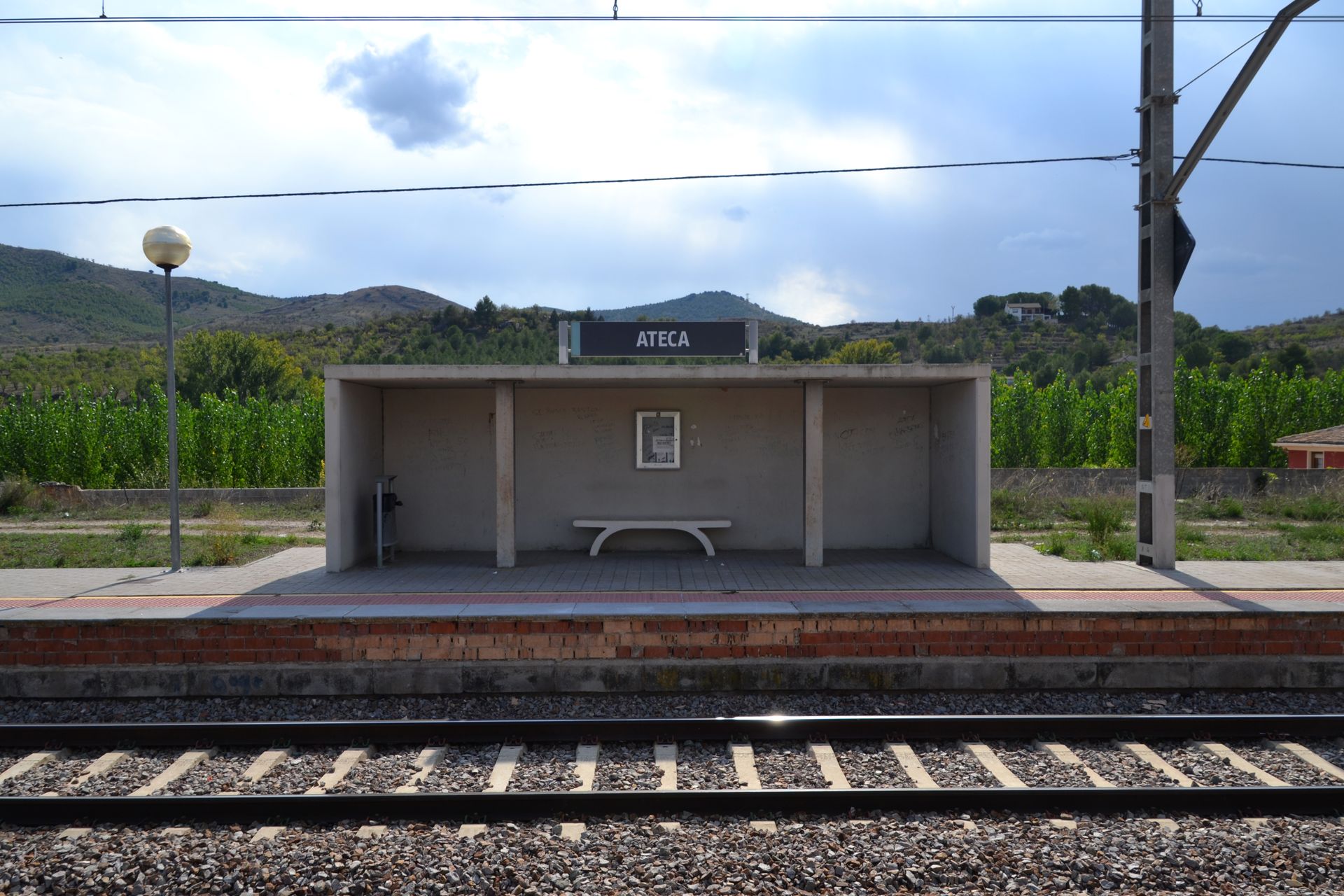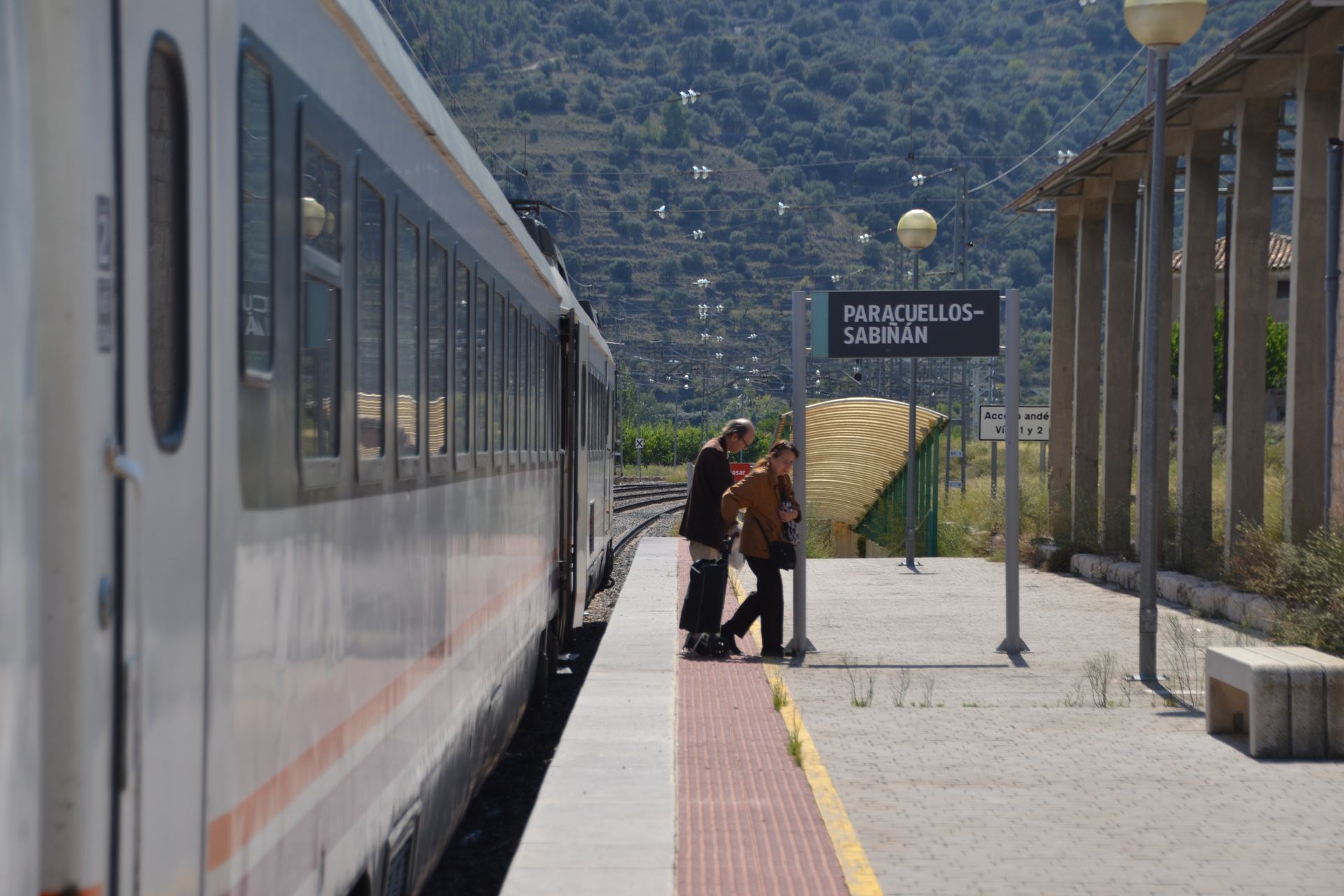Guadalajara – Casetas
CHARACTERISTICS
- Estación de Guadalajara (UTM 30T 484522 4499119); (P.K. 56,828) / VM
- Estación de Yunquera de Henares (UTM 30T 486215 4510685); (P.K. 68,456) / VM
- Estación de Humanes de Mohernando (UTM 30T 488281 4520028); (P.K. 78,815) / VM
- Estación de Espinosa de Henares (UTM 30T 493836 4528736); (P.K. 91,204) / VM
- Estación de Carrascosa de Henares (UTM 30T 498830 4528278); (P.K. 96,302) / VM
- Estación de Jadraque (UTM 30T 505403 4530988); (P.K. 104,204) / VM
- Estación de Matillas (UTM 30T 513185 4533651); (P.K. 115,442) / VM
- Estación de Baides (UTM 30T 517997 4539323); (P.K. 123,089) / VM
- Estación de Sigüenza (UTM 30T 529800 4546833); (P.K. 139,724) / VM
- Estación de Torralba (UTM 30T 542553 4554012); (P.K. 155,600) / VM
- Estación de Medinaceli (UTM 30T 548552 4557258); (P.K. 165,924) / VM
- Estación de Arcos de Jalón (UTM 30T 5605514562943); (P.K. 181,848) / VM
- Estación de Santa María de Huerta (UTM 30T 568898 4568435); (P.K. 192,000) / VM
- Estación de Santa María de Huerta (UTM 30T 568898 4568435); (P.K. 192,000) / VM
- Estación de Monreal de Ariza (UTM 30T 574480 4572309); (P.K. 200,459) / VM
- Estación de Ariza (UTM 30T 578722 4573557); (P.K. 205,060) / VM
- Estación de Cetina (UTM 30T 586924 4572136); (P.K. 213,688) / VM
- Estación de Alhama de Aragón (UTM 30T 591730 4572018); (P.K. 218,387) / VM
- Estación de Bubierca (UTM 30T 595818 4574591); (P.K. 223,735) / VM
- Estación de Ateca (UTM 30T 601678 4575493); (P.K. 231,437) / VM
- Estación de Terrer (UTM 30T 608025 4575329); (P.K. 238,318) / VM
- Estación de Calatayud (UTM 30T 613918 4578136); (P.K. 244,625) / VM
- Estación de Embid de Jalón (UTM 30T 617646 4586517); (P.K. 252,181) / VM
- Estación de Paracuellos-Sabiñán (UTM 30T 619691 4587405); (P.K. 257,840) / VM
- Estación de Sabiñán (UTM 30T 619699 4587406); (P.K. 259,375)
- Estación de Morés (UTM 30T 619681 4592913); (P.K. 263,425)
- Estación de Purroy (UTM 30T 621879 4592773); (P.K. 266,278)
- Estación de Morata de Jalón (UTM 30T 626919 4592682); (P.K. 272,344) / VM
- Estación de Ricla-La Almunia (UTM 30T 633255 4595628); (P.K. 280,392) / VM
- Estación de Calatorao (UTM 30T 636942 4598862); (P.K. 285,240) / VM
- Estación de Salillas de Jalón (UTM 30T 639590 4603167); (P.K. 290,627) / VM
- Estación de Épila (UTM 30T 641564 4607793); (P.K. 295,789) / VM
- Estación de Rueda de Jalón-Lumpiaque (UTM 30T 643113 4611111); (P.K. 299,534) / VM
- Estación de Plasencia de Jalón (UTM 30T 646949 4616798); (P.K. 306,345) / VM
- Estación de Grisén (UTM 30T 652502 4623112); (P.K. 314,625) / VM
- Estación de Alagón (UTM 30T 656853 4626119); (P.K. 315,000) / VM
- Estación de Casetas (UTM 30T 664679 4620877); (P.K. 327,846) / VM
The construction of the railway line between Chamartín station in Madrid and França station in Barcelona, corresponding to ADIF line 200, took place gradually throughout the 19th and 20th centuries.
In 1845, the section between Madrid and Zaragoza was declared to be of general state interest, which accelerated its construction, which was awarded to the Madrid to Zaragoza and Alicante Railway Company, MZA.
In 1845, the section between Madrid and Zaragoza was declared to be of general state interest [...]
The line was to begin at Atocha and in 1859 the works reached the town of Guadalajara. At this point, MZA began to make arrangements to enable a connection between this station and Zaragoza. Years later, in 1861, with the construction of the most advanced line, MZA signed an agreement with the Zaragoza to Pamplona Railway Company to organise a service between Madrid and Paris via Tudela, Pamplona and Bayonne.
Although there were some technical and financial setbacks in the following years, the Madrid-Zaragoza railway was fully completed in 1865.
Although there were some setbacks [...], the Madrid-Zaragoza railway was fully completed in 1865.
Later, the railway company from Tarragona to Barcelona and France, TBF, began construction of a line from Zaragoza to Tarragona, passing through Caspe. The aim was to establish a direct route between Zaragoza and Barcelona that could compete with the one that passed through Lleida, owned by the Northern Spanish Railway Company, CCHNE.
The TBF and MZA companies ended up merging in 1898 after a negotiation process for the joint operation of the Madrid-Zaragoza and Zaragoza-Barcelona lines.
In the 20th century, the line and its facilities began to be gradually modernised, with the construction of a double track in some sections.

Línea nº 200 a su paso por Medinaceli (Soria)
On the other hand, the country’s unstable economy at the beginning of the century forced the delay or cancellation of many pending reforms, as well as the modernisation of facilities and rolling stock, pushing the company into a critical situation.
However, state aid derived from the 1924 Railway Statute allowed MZA to undertake the necessary reforms to modernise the infrastructure. The Civil War, however, caused damage to the railway installations and after the war MZA was practically bankrupt, and so it ended up being integrated into Renfe [1]. Since its integration into Renfe, the line has been renovated, electrified and split into many sections. [ref link=”2″]
In the 20th century, the line and its installations began to be gradually modernised, with the construction of a double track in some sections.
The 1979 General Railway Plan allowed for the renovation of many facilities, such as those at the stations of Madrid-Atocha, Madrid-Chamartín (which absorbed a large part of the traffic from Atocha), Barcelona-Sants and Barcelona-Francia. [3]
The arrival of high-speed rail in 2003 on the Madrid-Barcelona route has meant a progressive reduction in the services of the conventional line that covered the transit between the two cities. Currently, they are limited to suburban services in metropolitan areas, medium-distance and freight and logistics services.
Currently, they are limited to suburban services in metropolitan areas, medium-distance and freight and logistics services.
The section covered by this file runs through varied landscapes with a marked continental influence. The first part, from Guadalajara to Mantillas approximately, follows the course of the Henares river, which has fields of crops and patches of more or less well-preserved groves on either side of the riverbed. The line then enters the Muela, Cabo Tiñoso and Roldán mountain ranges, where the station, which has been converted into a railway museum, stands out for its scenic beauty. Afterwards, the route meets up again with the Henares river as far as Sigüenza, reaching the river’s source in Horna. From that point on, the line advances through the Iberian System. The stations on this section have been preserved. Once in the province of Zaragoza, the line passes through Calatayud, the regions of Valdejalón and Ribera Alta del Ebro, until it reaches the metropolitan area of Zaragoza.

Apartadero de Humanes de Mohernando (Guadalajara)
The stations in Aragon have the same type of construction, different to those in the Castile-León section. The stations at Sabiñán and Calatayud are noteworthy, as are the railway bridges over the river Jalón. This section is the one with the greatest scenic value and tourist potential, as it is close to an attractive city such as Calatayud.
Category A1.
Electrified track with concrete sleepers in a good state of repair.
Photographic report

Cargadero de Espinosa de Henares (Guadalajara)

Línea nº 200 a su paso por Carrascosa de Henares (Guadalajara)

Apeadero de Ateca (Zaragoza)

Estación de Paracuellos - Sabiñán (Zaragoza)

Estación de Casetas (Zaragoza)

Puente sobre el río Jalón en el término de Embid de Jalón (Zaragoza)
References
-
[1] F. Wais, Historia de los ferrocarriles españoles. Editora Nacional, 1974.
-
[2] Ministerio de Obras Públicas, Plan General de Electrificación de los ferrocarriles españoles. Biblioteca Nacional Ministerio de Fomento, 1946. Ver referencia
-
3] M. M. Rubio, «RENFE, 75 AÑOS DE HISTORIA», Fundación de los Ferrocarriles Españoles, 2016. [En línea] Ver referencia